Abstract
The Lown grading system for ventricular arrhythmias has been used in observational and experimental studies of ischaemic heart disease. This grading system uses three levels of ventricular premature depolarisation frequency and four complex features to assign patients to one of seven grades. We tested several of the major assumptions of the Lown grading system in a group of 400 patients who had recently experienced acute myocardial infarction. The Lown grading system assumes that the frequency of ventricular extrasystoles exerts a negligible risk force in patients who have complex ventricular extrasystoles. We found, however, that the frequency of ventricular extrasystoles contributed significant additional risk for cardiac death even in the three highest Lown grades, 4A, 4B, and 5. The Lown grading system assumes that, of the four complex features used, R on T ventricular extrasystoles have the greatest risk for subsequent cardiac death. We found that paired ventricular extrasystoles and ventricular tachycardia had more prognostic significance than R on T ventricular extrasystoles. It is important for prognostic stratification that subgroups which are merged into a given Lown grade should be relatively homogeneous with respect to outcome. We found a lack of homogeneity in the three highest Lown grades. Grade 5 contained 16 subgroups with a mortality risk which ranged from 0 to 75 per cent; statistically significant differences in subsequent mortality were found among these subgroups. Most of the shortcomings of the Lown grading system in our acute myocardial infarction population resulted from failure to give sufficient weight to ventricular extrasystoles frequency and to repetitive ventricular extrasystoles.
Full text
PDF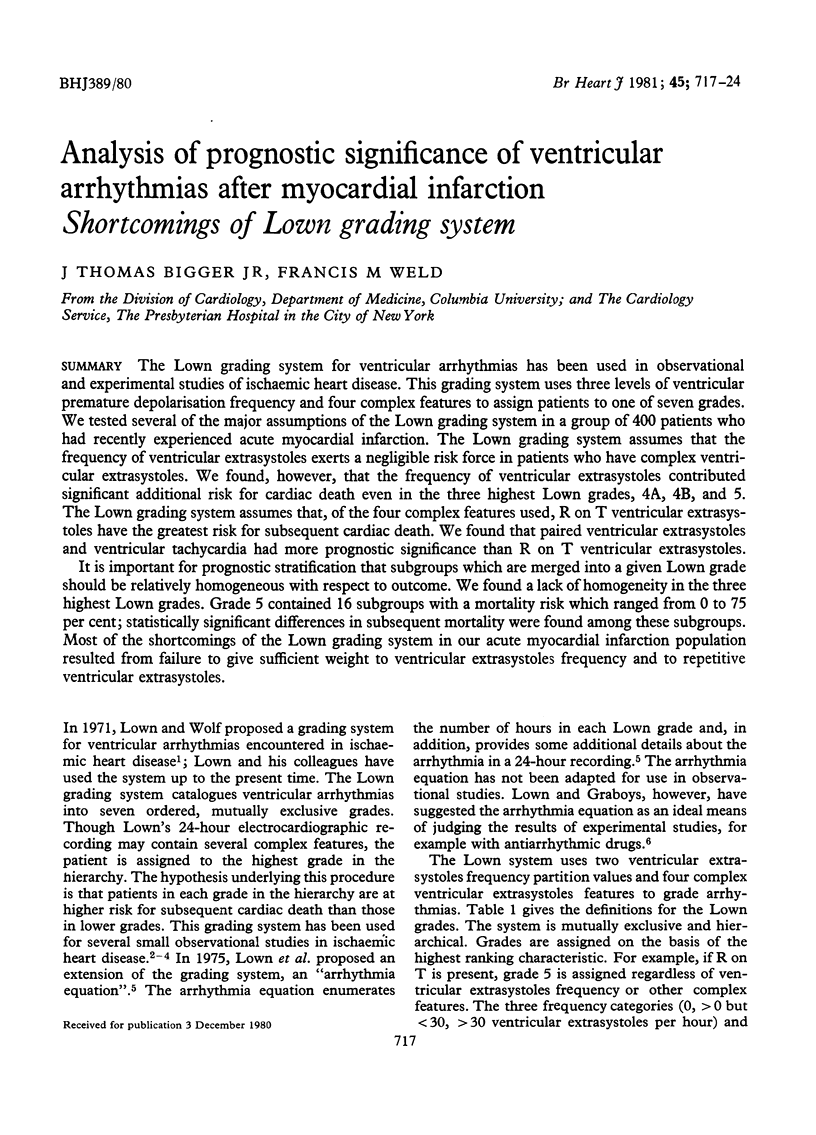
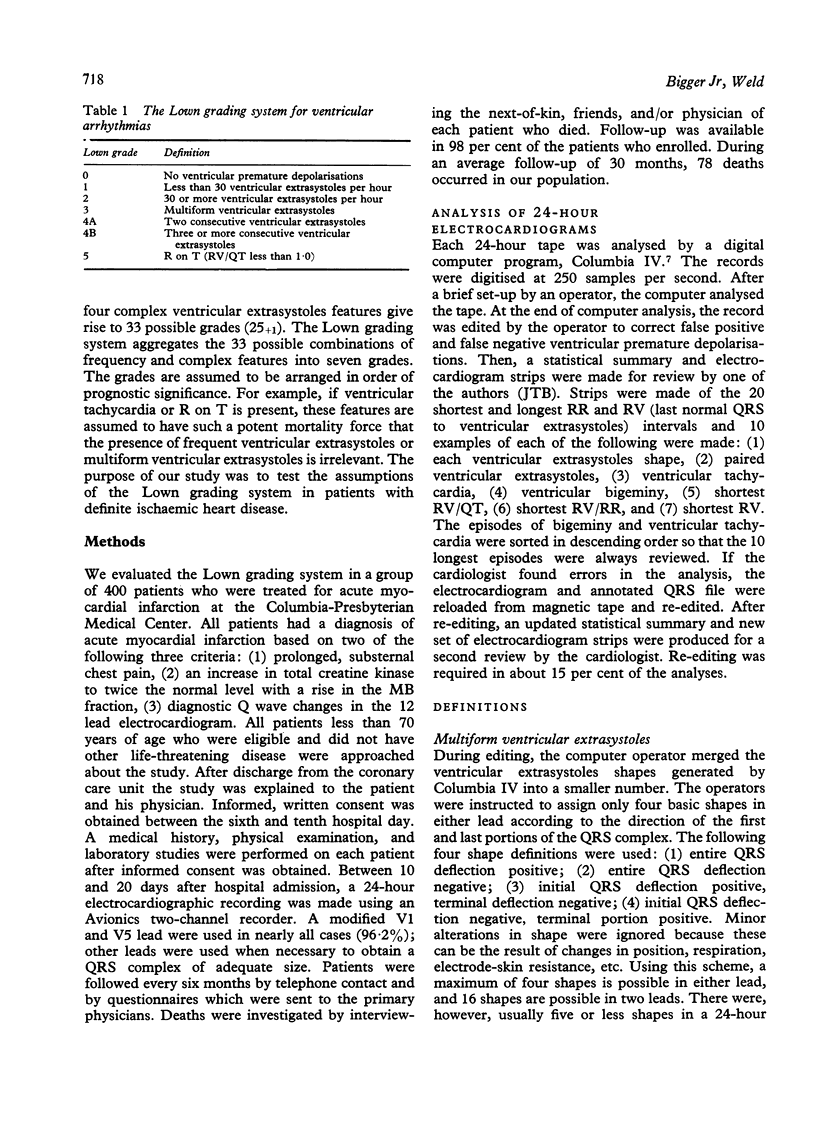
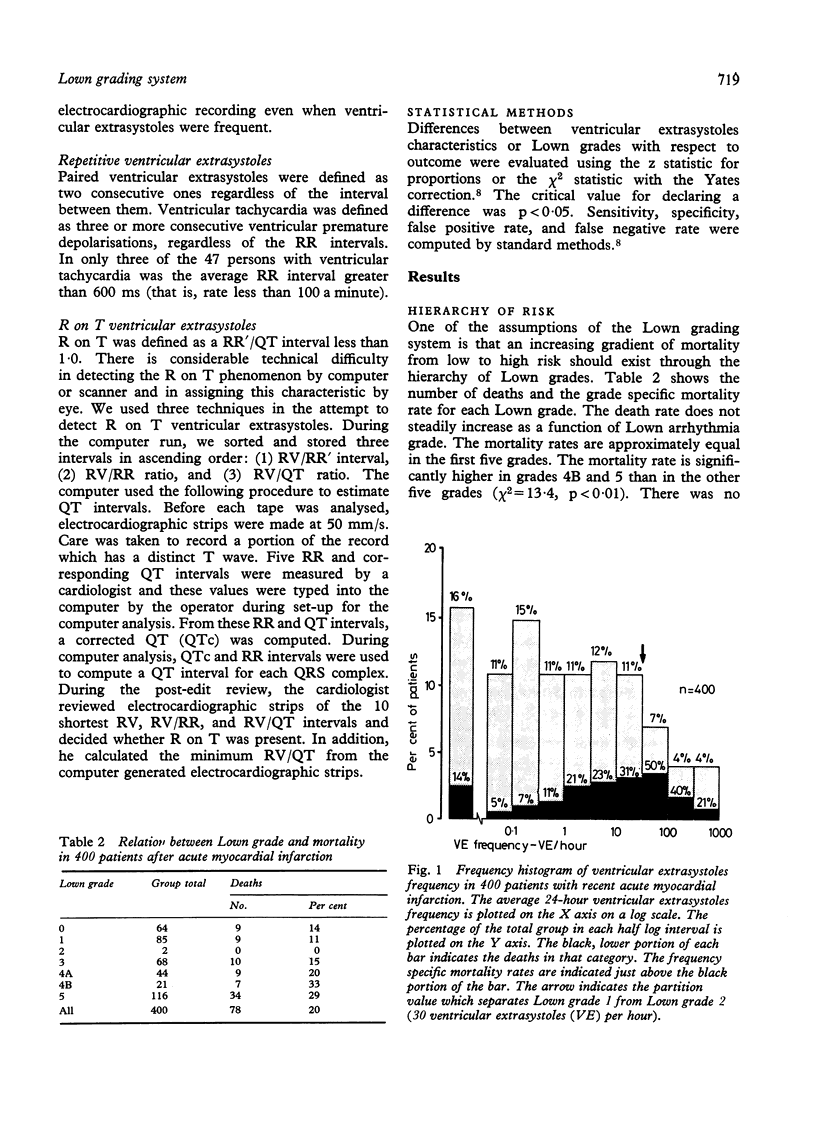
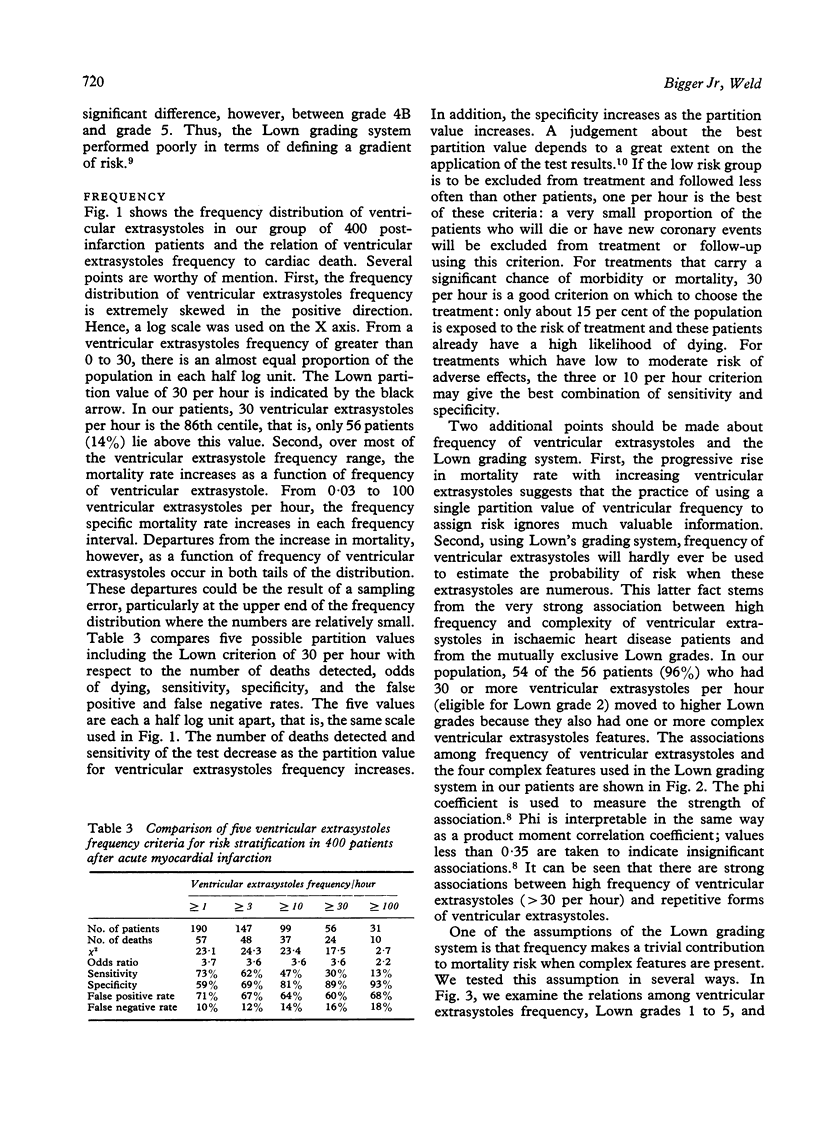
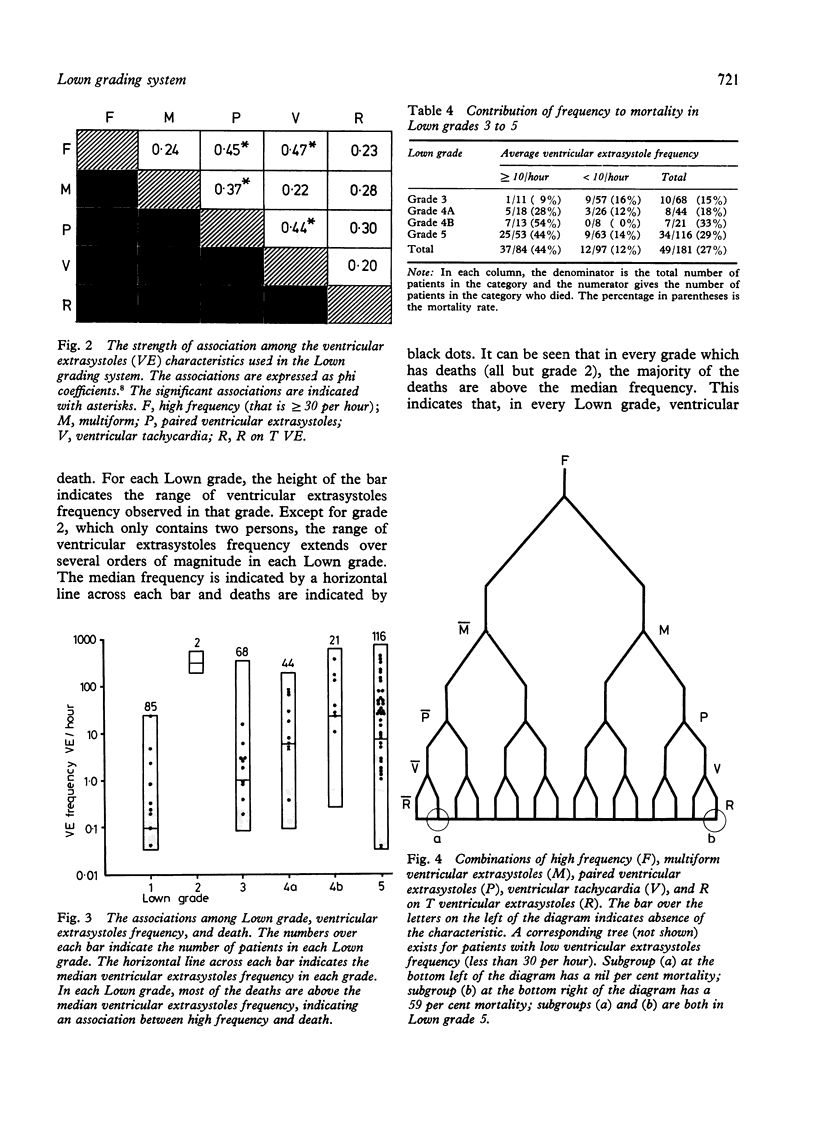
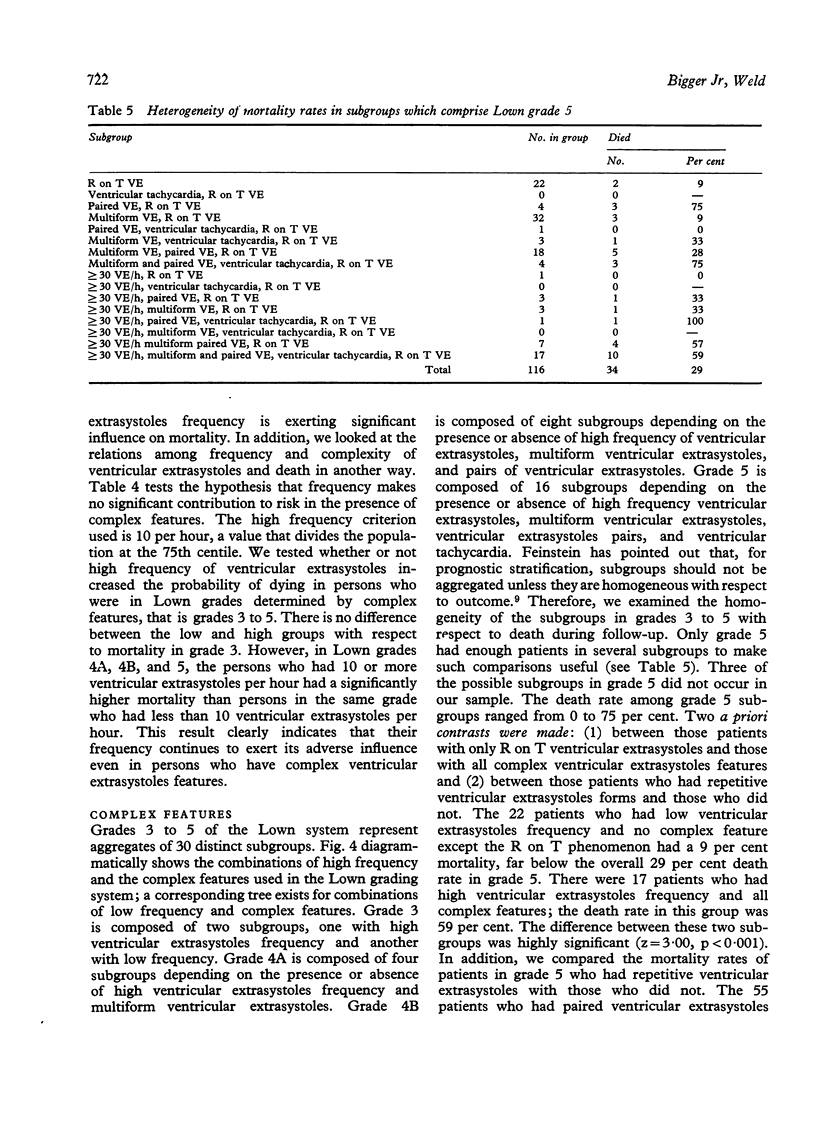
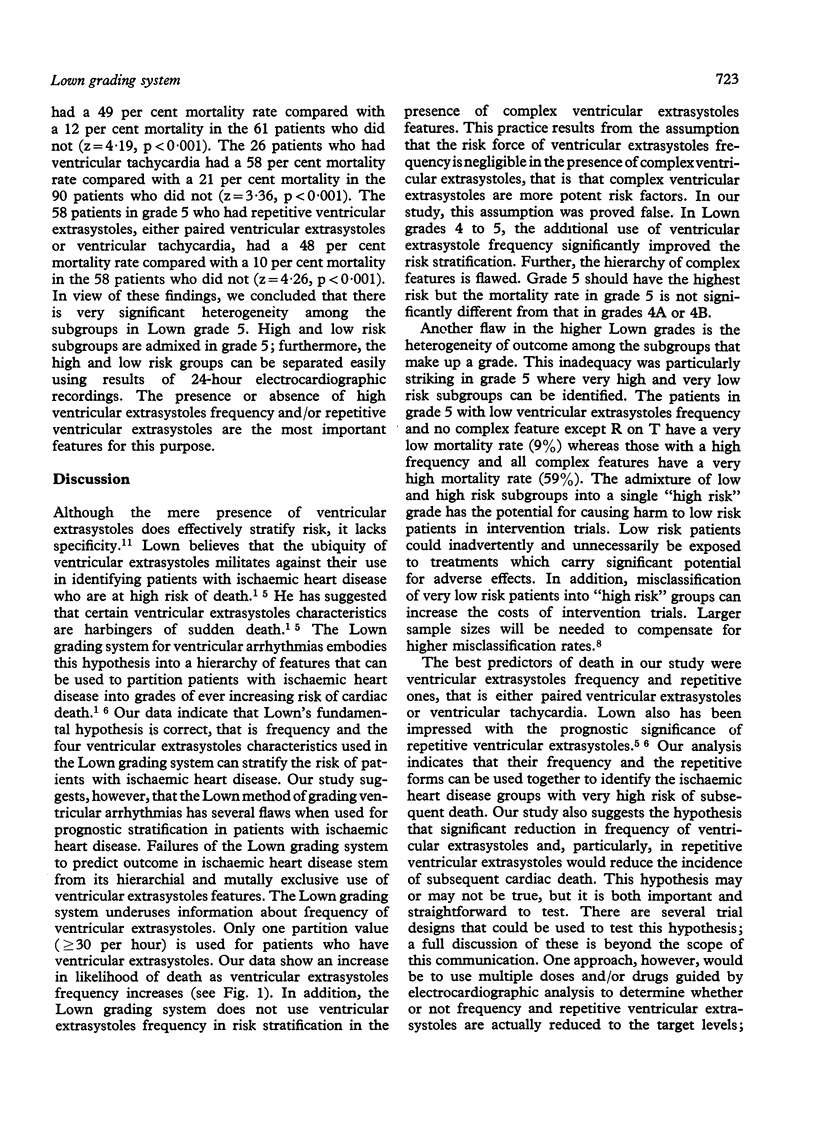
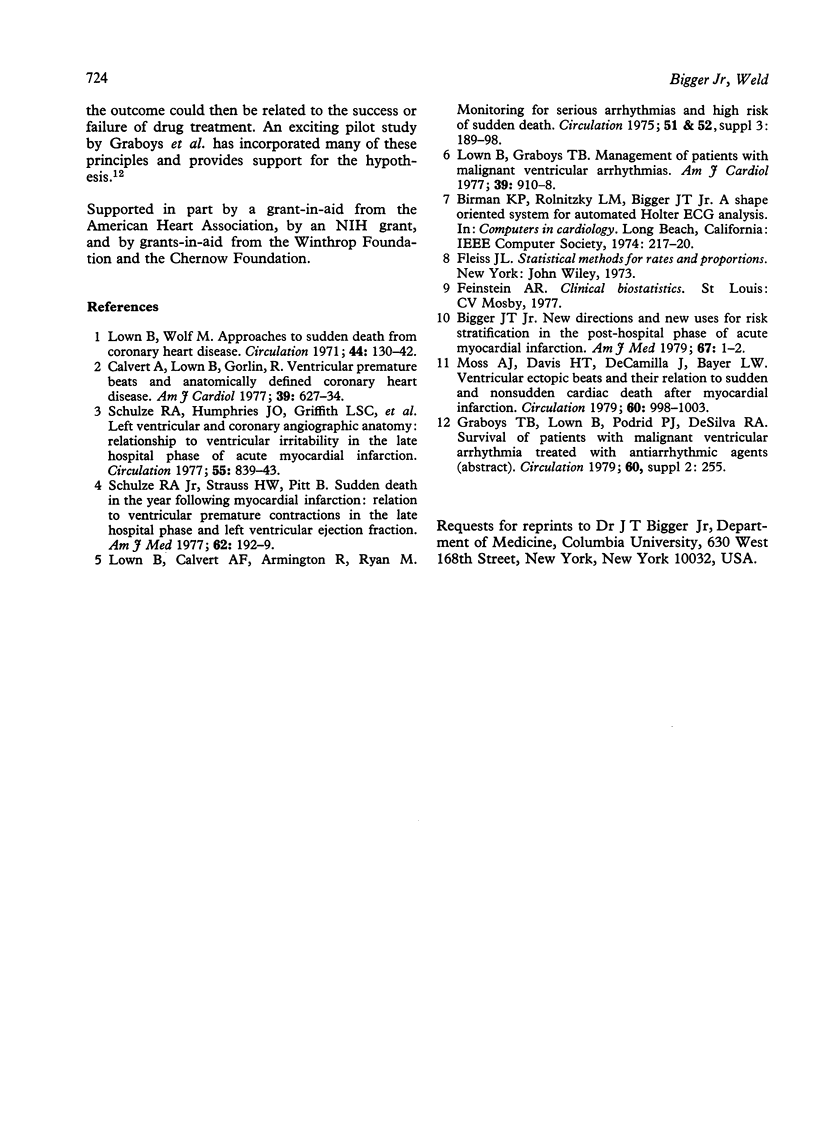
Selected References
These references are in PubMed. This may not be the complete list of references from this article.
- Bigger J. T., Jr New directions and new uses for risk stratification in the posthospital phase of acute myocardial infarction. Am J Med. 1979 Jul;67(1):1–2. doi: 10.1016/0002-9343(79)90060-3. [DOI] [PubMed] [Google Scholar]
- Calvert A., Lown B., Gorlin R. Ventricular premature beats and anatomically defined coronary heart disease. Am J Cardiol. 1977 May 4;39(5):627–634. doi: 10.1016/s0002-9149(77)80121-5. [DOI] [PubMed] [Google Scholar]
- Lown B., Graboys T. B. Management of patients with malignant ventricular arrhythmias. Am J Cardiol. 1977 May 26;39(6):910–918. doi: 10.1016/s0002-9149(77)80046-5. [DOI] [PubMed] [Google Scholar]
- Lown B., Wolf M. Approaches to sudden death from coronary heart disease. Circulation. 1971 Jul;44(1):130–142. doi: 10.1161/01.cir.44.1.130. [DOI] [PubMed] [Google Scholar]
- Moss A. J., Davis H. T., DeCamilla J., Bayer L. W. Ventricular ectopic beats and their relation to sudden and nonsudden cardiac death after myocardial infarction. Circulation. 1979 Nov;60(5):998–1003. doi: 10.1161/01.cir.60.5.998. [DOI] [PubMed] [Google Scholar]
- Schulze R. A., Jr, Humphries J. O., Griffith L. S., Ducci H., Achuff S., Baird M. G., Mellits E. D., Pitt B. Left ventricular and coronary angiographic anatomy. Relationship to ventricular irritability in the late hospital phase of acute myocardial infarction. Circulation. 1977 Jun;55(6):839–843. doi: 10.1161/01.cir.55.6.839. [DOI] [PubMed] [Google Scholar]
- Schulze R. A., Jr, Strauss H. W., Pitt B. Sudden death in the year following myocardial infarction. Relation to ventricular premature contractions in the late hospitals phase and left ventricular ejection fraction. Am J Med. 1977 Feb;62(2):192–199. doi: 10.1016/0002-9343(77)90314-x. [DOI] [PubMed] [Google Scholar]


